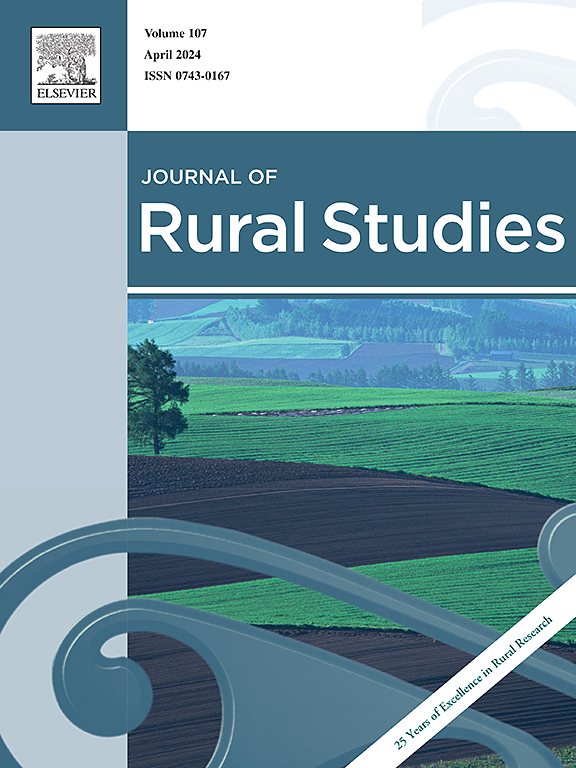Sex- & age-selectivity in rural-urban migration in northern Sweden 1900–2019
IF 5.7
1区 社会学
Q1 GEOGRAPHY
引用次数: 0
Abstract
This study examines long-term patterns in rural-to-urban migration in the northern Swedish county of Västerbotten from 1900 to 2019. The study is based on individual-level register data that have been harmonized across time. The main focus is on the development of the sex and age profile of the rural-urban migrants. The analysis is conducted using discrete-time event history analysis in terms of the logistic hazard rate of rural-urban migration. The results, as expected, show that the development of the hazard of rural-urban migration increased substantially over time, closely following the general development of urbanization in Sweden. Furthermore, that the hazard among women was continuously larger than among men. However, the relative differences between the sexes were largest at the beginning of the investigated period and have become smaller over time, primarily due to men gradually adopting migration patterns similar to those of women. The study suggests that this is due to the rural labor market, which for a long time offered more compelling pathways for men to stay in rural areas. However, as these rural labor markets gradually declined during the 20th century, coupled with the increasing importance of higher education, rural men began moving to urban areas to a greater degree. While young adults constituted the age group with the highest risk of rural-urban migration throughout the period, the earliest rural-urban migrants started to move directly as they reached working age, however, after the 1980s, movers typically postpone migration until their early 20s, the same time as they enter into tertiary education.
1900-2019年瑞典北部农村-城市移民的性别和年龄选择性
本研究考察了1900年至2019年瑞典北部Västerbotten县农村向城市迁移的长期模式。这项研究是基于个人层面的登记数据,这些数据已经协调了一段时间。主要的重点是发展城乡移徙者的性别和年龄概况。本文采用离散时间事件历史分析方法对城乡人口迁移的logistic危险率进行了分析。正如预期的那样,研究结果表明,随着瑞典城市化的总体发展,农村-城市迁移风险的发展随着时间的推移而大幅增加。此外,女性的风险一直大于男性。然而,两性之间的相对差异在调查期间开始时最大,随着时间的推移逐渐缩小,这主要是由于男子逐渐采取与妇女相似的移徙模式。研究表明,这是由于农村劳动力市场,长期以来,农村劳动力市场为男性留在农村地区提供了更有吸引力的途径。然而,随着这些农村劳动力市场在20世纪逐渐衰落,再加上高等教育的重要性日益增加,农村男性开始在更大程度上向城市地区转移。虽然在整个时期,年轻人构成了农村-城市迁移风险最高的年龄组,但最早的农村-城市迁移者在达到工作年龄时开始直接迁移,然而,在20世纪80年代之后,迁移者通常将迁移推迟到20岁出头,与此同时,他们开始接受高等教育。
本文章由计算机程序翻译,如有差异,请以英文原文为准。
求助全文
约1分钟内获得全文
求助全文
来源期刊

Journal of Rural Studies
Multiple-
CiteScore
9.80
自引率
9.80%
发文量
286
期刊介绍:
The Journal of Rural Studies publishes research articles relating to such rural issues as society, demography, housing, employment, transport, services, land-use, recreation, agriculture and conservation. The focus is on those areas encompassing extensive land-use, with small-scale and diffuse settlement patterns and communities linked into the surrounding landscape and milieux. Particular emphasis will be given to aspects of planning policy and management. The journal is international and interdisciplinary in scope and content.
 求助内容:
求助内容: 应助结果提醒方式:
应助结果提醒方式:


